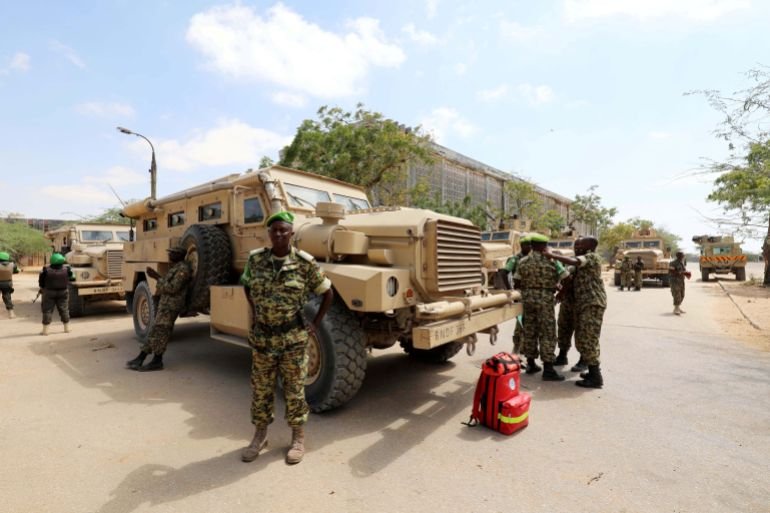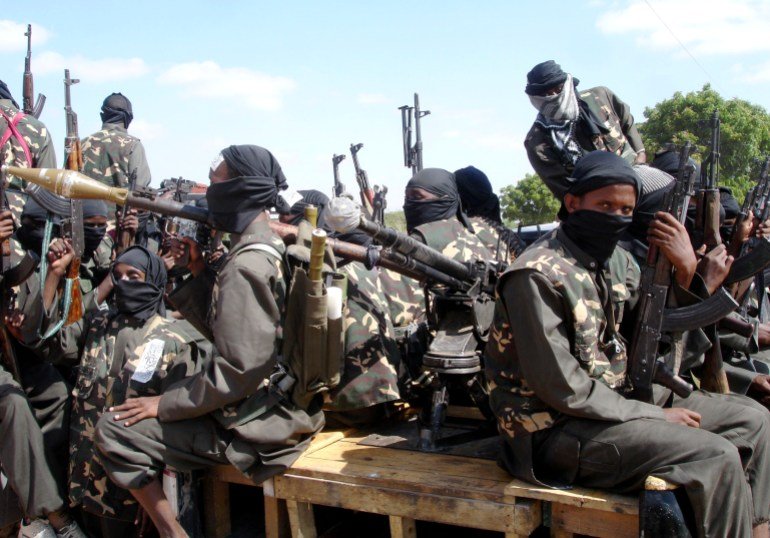Three decades have passed since Somalia became stuck in a spiral of challenges that prevent it from recovering and turning the page on a prolonged collapse.
In the state of fluidity that the country suffers, the Al-Shabaab Mujahideen movement emerges as one of the most dangerous threats to the Somali state, as the group – which emerged in the middle of the first decade of this century – has been able to resist the continuous attempts of successive Somali governments and their allies to write the last word on its history.
This crisis, which has lasted almost two decades, raises many questions about the causes of the government’s failure and highlights part of the Somali tragedy in which social, economic and institutional factors are intertwined, which have paved the way for young people to not threaten Somalia alone, but to transform into an imminent regional danger.
State fragility
When looking for the reasons for Mogadishu’s inability to eliminate the Al-Shabaab movement, we must go back to the early 1990s, a period that represented the peak of the slope from which Somalia emerged with the collapse of state institutions and the country plunged into a civil war and sharp divisions that have not managed to shake off their effects until now.
While the world witnessed many changes between 2008 and 2024, with some countries increasing and others decreasing, Somalia continued throughout this period to fluctuate between the two lowest ranks of the global fragility index published by the American non-profit organization “Global Peace Fund”.
The fragile state is characterized by low efficiency in the exercise of its fundamental functions in various areas, such as security, the monopoly of legitimate power or the rational management of financial resources, in addition to its capacity to enforce the law.

Security sector
This fragility is reflected in the security sector in Somalia, which faces numerous challenges that prevent it from fully fulfilling the tasks assigned to it, whether it is confronting the Al-Shabaab movement or extending security throughout the country.
Perhaps the most significant manifestation of the weakness of the Somali security and military services is the continued need for the presence of the African mission to support the Somali army in the face of the movement since 2007, as this mission, under its various names, has carried out functions related to supporting Somali government structures, training security forces and creating a secure environment for the delivery of humanitarian assistance.
Somalia has witnessed tireless efforts in recent years to build and strengthen its security sector in cooperation with allied countries, led by Turkey, but the results are still less than expected, with Mogadishu requesting last August for the African Union to assign a new mission to begin work early next year with the end of its current mandate.
Many observers believe that it is still too early for Somalia to reach the stage of full autonomy and, in this context, statements were published by the International Crisis Group and reported by the East African newspaper in mid-July, according to which “Mogadishu will not do without the help of foreign forces. “At least in the next two years, for fear of a security setback.”

Corruption favors young people
Another manifestation of the fragility of institutions in Somalia is the inability of government authorities to address endemic corruption in state departments, which is clearly revealed by the Transparency International Foundation’s indicators, as Mogadishu has been at the bottom of the global rankings in this annual ranking for over a decade.
This reality casts a heavy shadow over Mogadishu’s ability to eliminate Al-Shabaab, as tribal and political ties pave the way for its owners to gain access to sensitive military and security positions, negatively affecting the capacities of the relevant institutions, whether at the planning level or at the field level, due to the failure to meet standards such as competence, professionalism and aptitude.
In addition to the above, corruption not only provides a fertile environment for Al-Shabaab to penetrate state agencies tasked with combating it, but also leads to undermining confidence in the ability of international forces supporting Somalia to rely on its security institutions.
A February 2013 report by the United Nations Monitoring Group for Somalia and Eritrea indicated that weapons obtained by the Somali government were being sold to members of the Somali al-Shabaab movement, describing what happened as “systematic and high-level violations in the region.” management and distribution of weapons and ammunition.
In a sign of the persistence of corrupt practices, a report published by the Center for Combating Terrorism at West Point University in April 2024 highlighted the “extremely high levels of corruption” within the military institution as one of the factors leading to the low morale of Somali army fighters, while it was reported that News in the same period on the sale of weapons and logistical supplies belonging to units of the same institution in the markets of Mogadishu.

Political rivalries
Through his experience as a member of the Peace Operations Effectiveness Network research team that conducted an evaluation of the African Union mission in Somalia in 2018, the director of the security studies program at George Washington University, Professor Paul Williams, observes a different set of conflicts that characterize the regions where the movement is active.
Since the collapse of the central government in 1991, Somalia has been the scene of ongoing internal struggles for control of power, the intensity of which has intensified considerably since the early 2000s, due to the influx of many external resources into the state-building project during the 2000s.
These conflicts in the African Union Mission in Somalia area of operations revolved around control over the Transitional Federal Government, then the Federal Government of Somalia, later spreading to emerging regional administrations or Union member states.
These political conflicts closely linked to the influential tribal dimension in Somalia through the competition for relative power and influence between the many Somali clans, sub-clans and sub-sub-clans, as well as with the vacuum created by the absence of the state, these entities have transformed into agencies that provide security, justice and employment opportunities.
Reports published by the “Armed Conflict Locations and Events Database Project” in 2023 explained how internal political conflict undermined the counter-insurgency campaign launched by the Somali government in the first half of the aforementioned year, and how tribal rivalries opened the door for Al-Qaeda-Shabaab to communicate with certain sub-clans and gain their loyalty.
These persistent rivalries in their various dimensions have deepened political divisions, weakening Mogadishu’s ability to form a coherent national security architecture that clarifies power structures and relationships between the federal government and federal states in the face of Al-Shabaab, according to a study published by the Counterterrorism Center at West Point University.
The revival of the movement
Despite waves of painful strikes in 2006-2007, 2011-2016 and 2022-2023, Al-Shabaab has managed to absorb the shocks, regain its vitality and continue to pose one of the most dangerous security threats, not only in Somalia, but also regionally.
In an attempt to answer the question: “How did the movement do this?” Professor Stig Jarl Hansen, professor of international relations at the Norwegian University of Life Sciences and an expert on Islamist movements in the Horn of Africa, identifies a set of overlapping factors that explain Al-Shabaab’s repeated resurgence.
In addition to entering as an active party in the game of tribal rivalries and balances by attracting local leaders, Al-Shabaab has been able to build a good reputation in certain environments as a force capable of establishing security and protecting rights through its judicial system, which has strengthened its capacity to implement its policies and punish rebels who oppose them.
While the political economy of violence, as described by Professor Paul Williams, represents one of the main dimensions of the crisis in areas under the movement’s control, with Al-Shabaab’s ability to raise millions of dollars through illegal taxes, smuggling and money laundering networks inside and outside Somalia, which inject money into the arteries of the movement and allow it to buy weapons and recruit fighters in a country whose youth suffer from high unemployment and very high poverty rates.

Expansion of the movement
In addition to the above, the movement has been able to consolidate its control for many years over the Lower and Middle Juba regions in southern Somalia, as well as the Southwestern State of the country, and has made it a safe environment that it uses to rest its forces, train new forces, plan and coordinate operations and propaganda efforts, as represented by the restoration and sustainability of government control in this situation. Land is an indispensable condition for the final salvation of the ghost of youth.
In conclusion, what has been mentioned above represents broad headings under which many sub-headings are grouped, which for many years have painted a bleak picture that goes beyond the Somali security reality to address fundamental issues whose complexity has shaped the characteristics of the crisis in which Puntland is plunged. the country groans.
Thus, it seems that achieving a final victory against Al-Shabaab requires not only the development of the security sector and the military establishment, which have undergone notable changes in recent years, but is also closely linked to the urgent need to redefine the role of the tribe in political life, combat corruption and prioritize higher national interests over partisan interests, which paves the way for Somalia to emerge from its protracted crisis.

